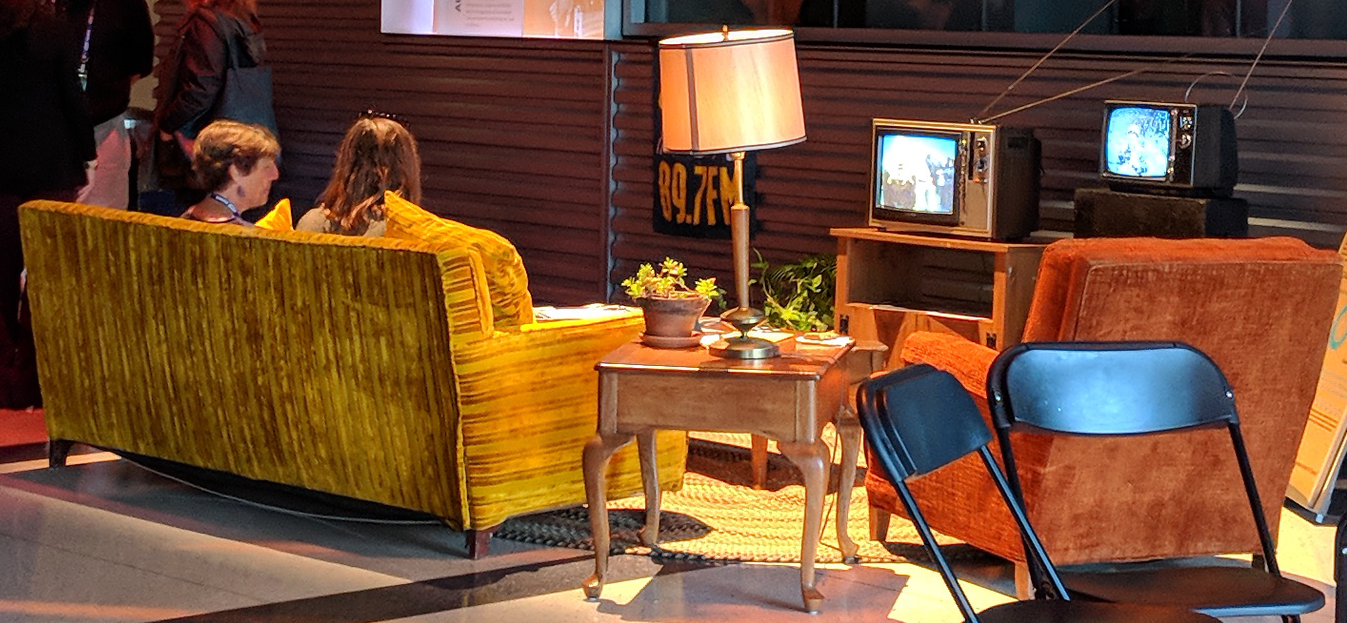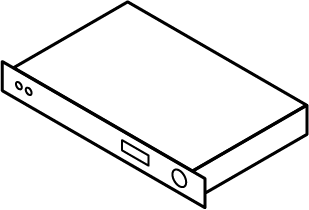WGBH Alumni Weekend
Archives Over the Air
Origins
As part of our ongoing collaboration with the WGBH Archives, we set out to create a “test drive” of our low-power analog broadcast system displaying WGBH archival content. The annual WGBH Alumni event was the perfect occasion for such a test, bringing in the people who were very familiar with the content we were broadcasting - since they’d produced it!
We wanted to do a one-day run to see how the exhibit functioned as a tangible installation. How would people engage with it? What questions and interactions would it spark?

Making it Happen
For the physical exhibit design, we aimed to create an immersive atmospheric that felt true to the original contexts in which the content was originally displayed - so, we decided to recreate an entire 70’s-style living room. After renting out furniture, we set up the space as a self-contained living room existing within the broader event. Also essential to our exhibit design was signage. A takeaway from previous testing revealed that we needed tangible artifacts to guide people through the elements of the exhibit, so signage was a must; here, we framed it as a “channel guide” providing context and background for what we were doing, as well as some basic info on what was being broadcast.

Making it Work

Our broadcast system, under ongoing development, employs off-the-shelf broadcast equipment. Analog signals from a rack of playback devices are modulated to the correct frequencies, then broadcast over the air to our antique TVs.
 Playback devices: Standard, off-the-shelf rack-mount DVD players. Analog (RCA) output, with the option to play media from SD cards for future use.
Playback devices: Standard, off-the-shelf rack-mount DVD players. Analog (RCA) output, with the option to play media from SD cards for future use.
 Modulators: These units convert the analog signal from the DVD players into one that is frequency modulated.
Modulators: These units convert the analog signal from the DVD players into one that is frequency modulated.
 Antenna: For this case, we chose a stock, off-the-shelf unpowered TV antenna. In RF signals, a broadcast antenna and receiver antenna can fulfill the same purpose - so, we were able to use a standard TV antenna to broadcast our signal.
Antenna: For this case, we chose a stock, off-the-shelf unpowered TV antenna. In RF signals, a broadcast antenna and receiver antenna can fulfill the same purpose - so, we were able to use a standard TV antenna to broadcast our signal.
 TVs: To display our content, we used vintage TVs from the 70s-80s:
TVs: To display our content, we used vintage TVs from the 70s-80s:
- A 1970’s Sony Trinitron, Color
- A 1980’s Sears, Black & White
- A 1980’s RCA hand-held, Color

Going Live
Today @wgbharchives and @OlinCollege unveiled our “Archives Over the Air” exhibit at the WGBH Alumni Reunion! The exhibit features historic @wgbh programming via portable, multi-channel televisions, authentically delivering the original tactile appeal of analog TV 📺. pic.twitter.com/i8BYjqhI7h
— Casey Davis Kaufman (@CaseyEDavis1) October 20, 2018
At the event itself, we set up our full display, successfully broadcasting content to all six channels for the duration of the event. After a successful showing and great conversations with attendees, we had a lot of ideas for improving our project moving forward.
Spurring dynamic engagement - How do we encourage people to get up close and “play” with our exhibit (changing the channel, moving the antenna, etc.)? We found that attendees enjoyed seeing the content, but were less inclined to get up close to it. This may have been because of the way the furniture was arranged; nevertheless, an important element of our exhibit is that is must draw participants in.
Consider audience context - For this event, our audience was folks who’d worked at WGBH, so most were already very familiar with a lot of the content we were broadcasting. This is quite different from how it would be at an installation elsewhere, so the story we were telling was quite different, i.e. experiencing the history of the programs wasn’t anything new to our audience. So, it’s important for us to consider what about the content makes it engaging and interesting to our particular audience.